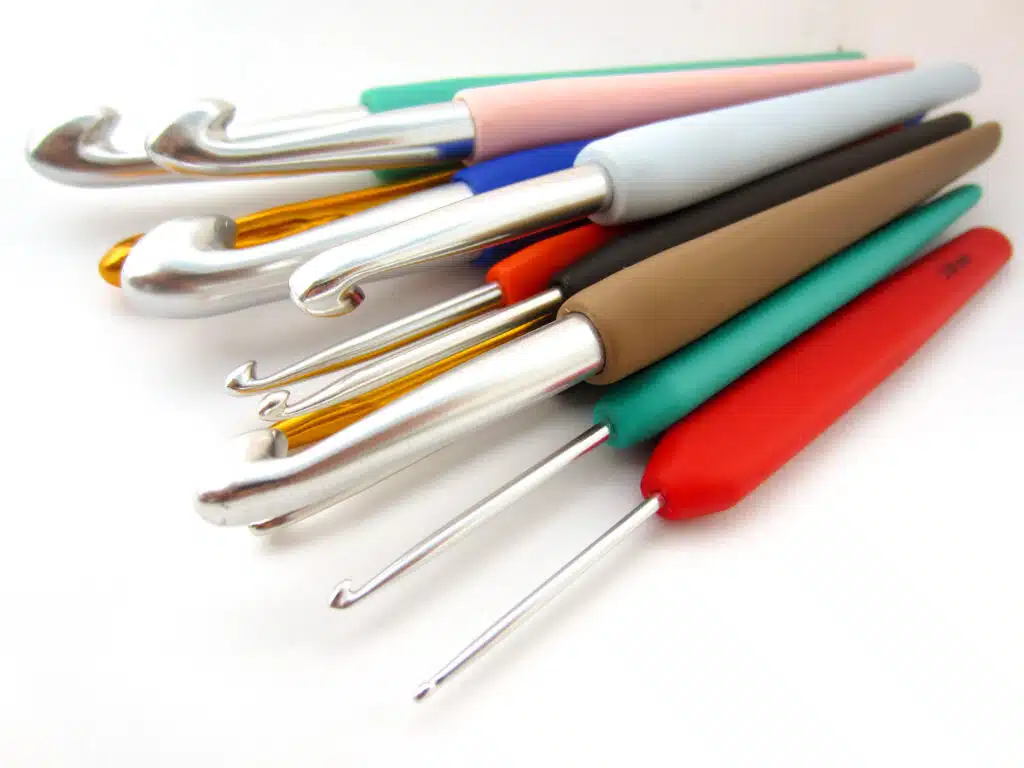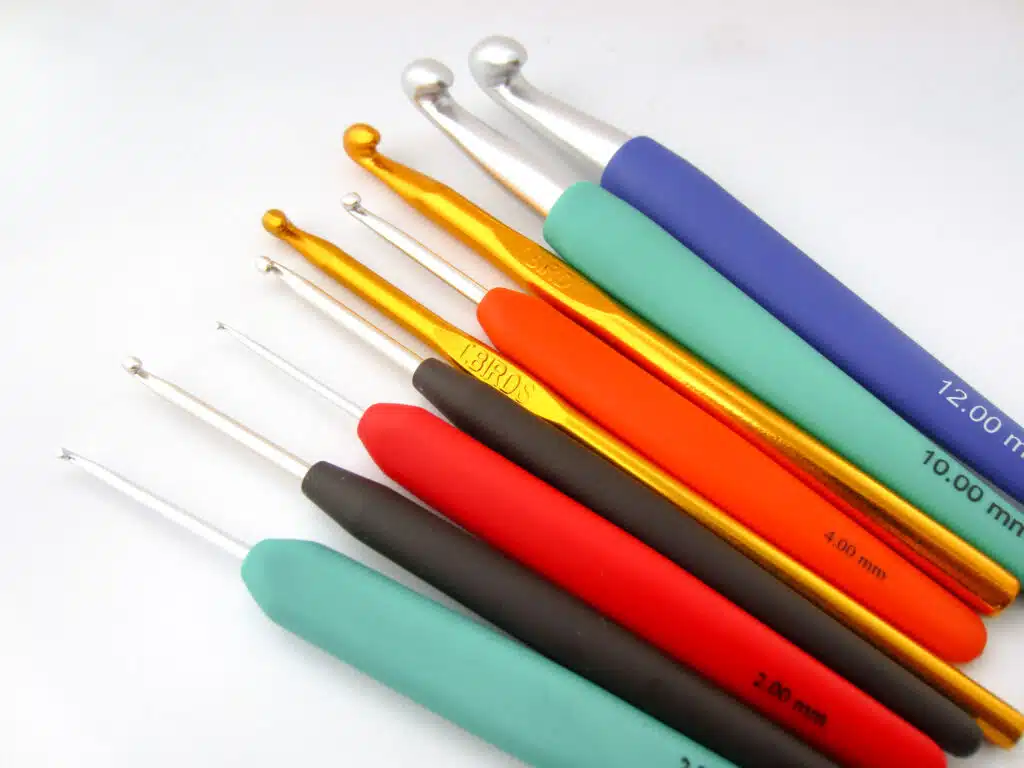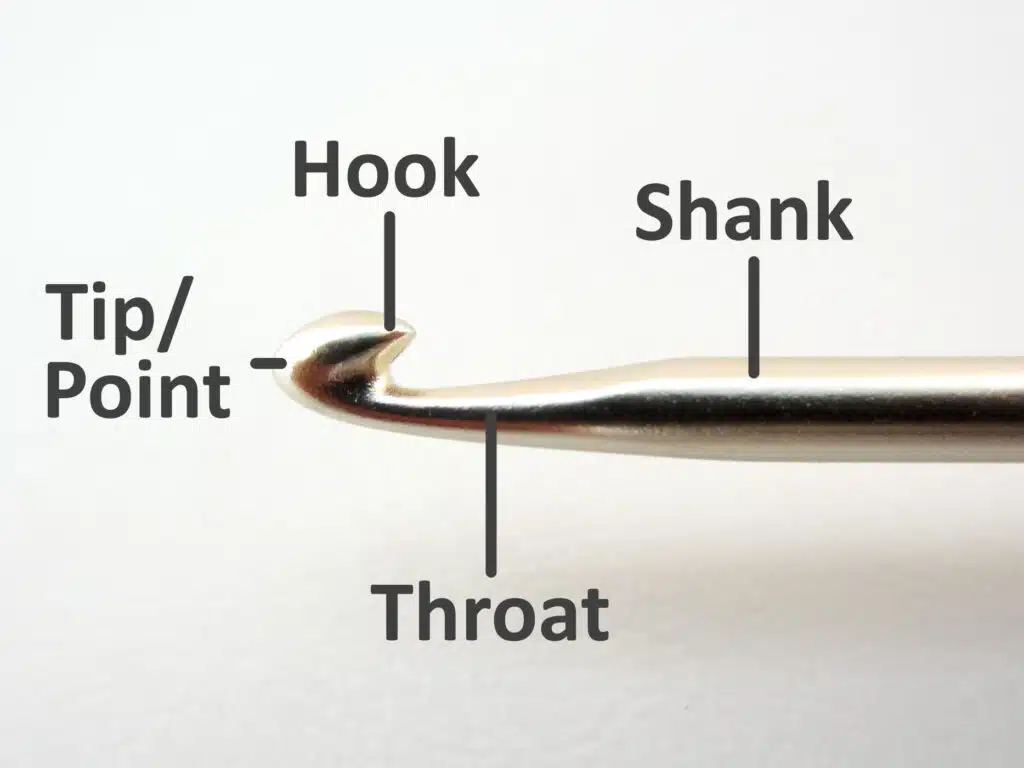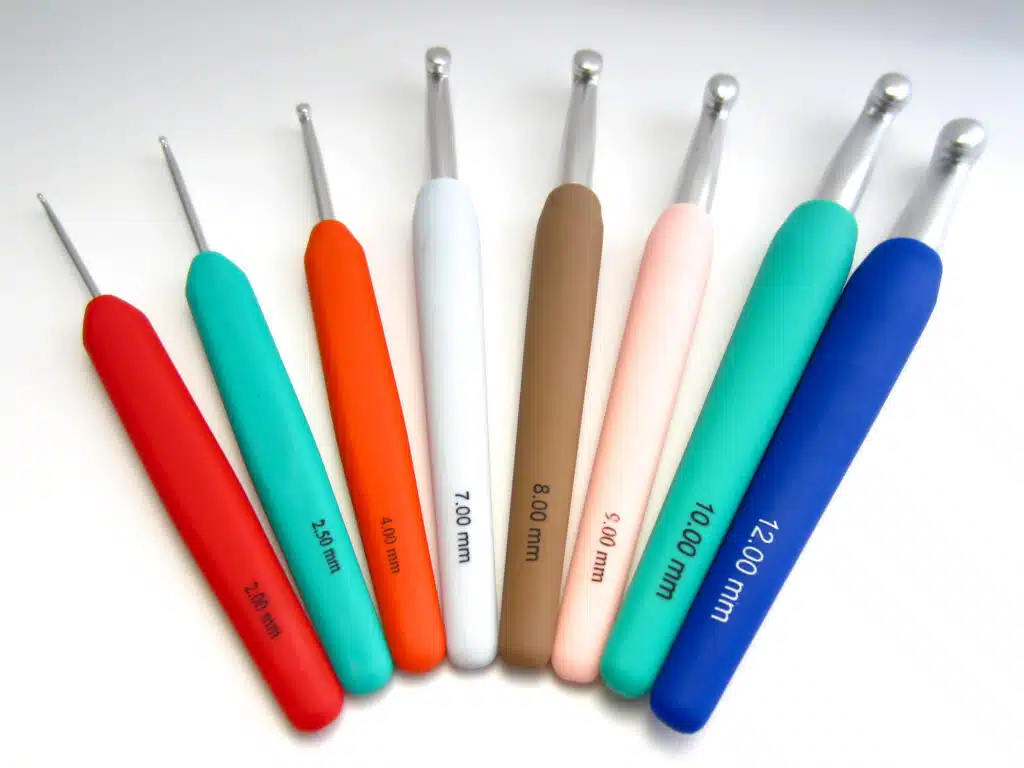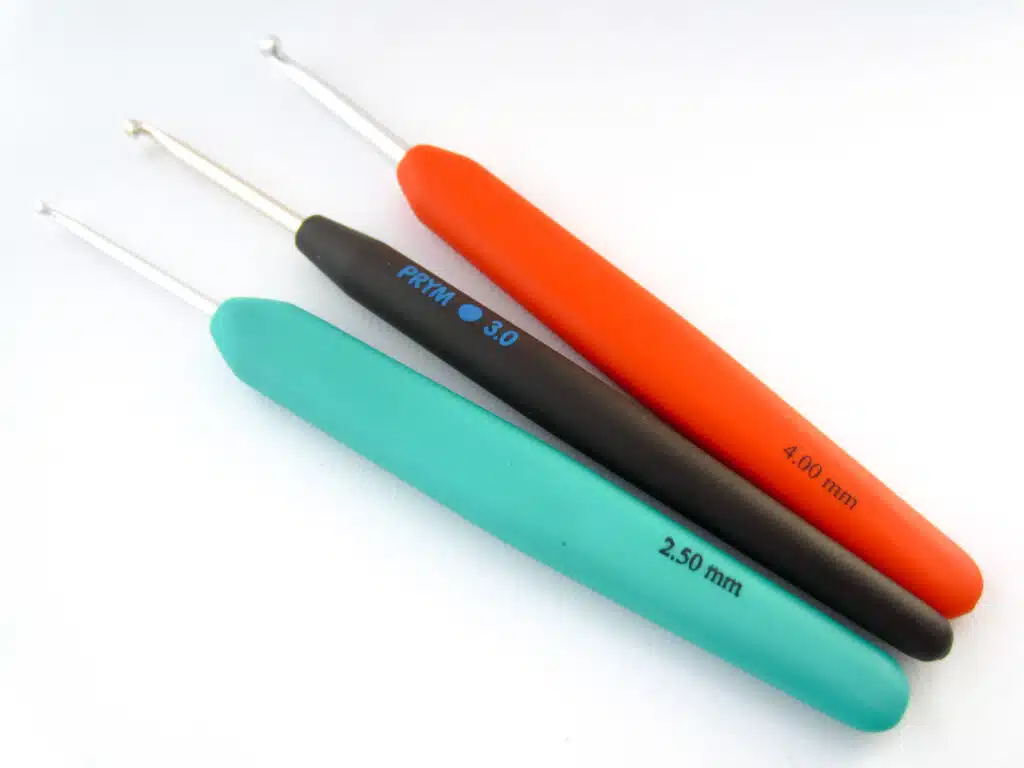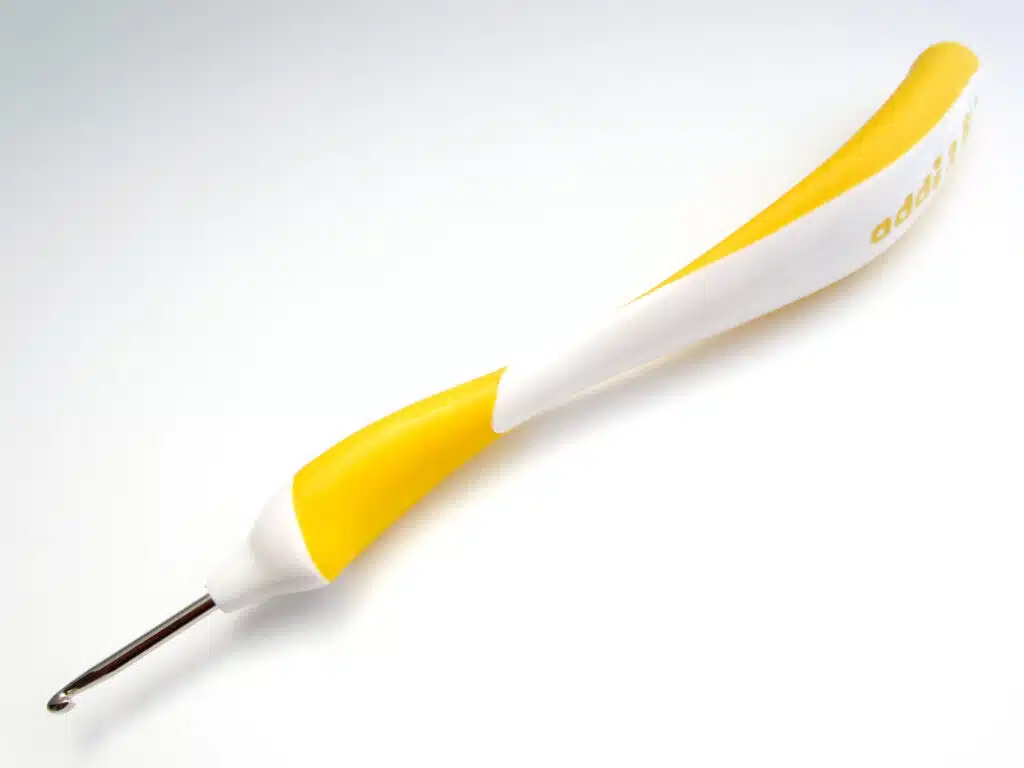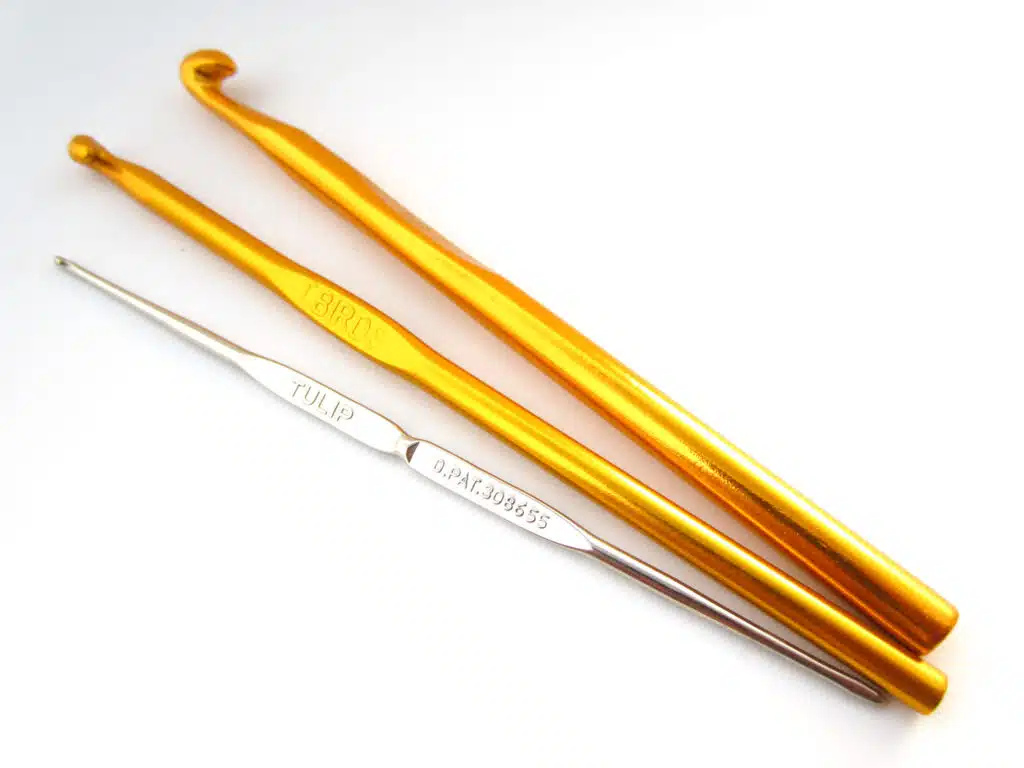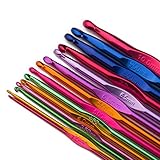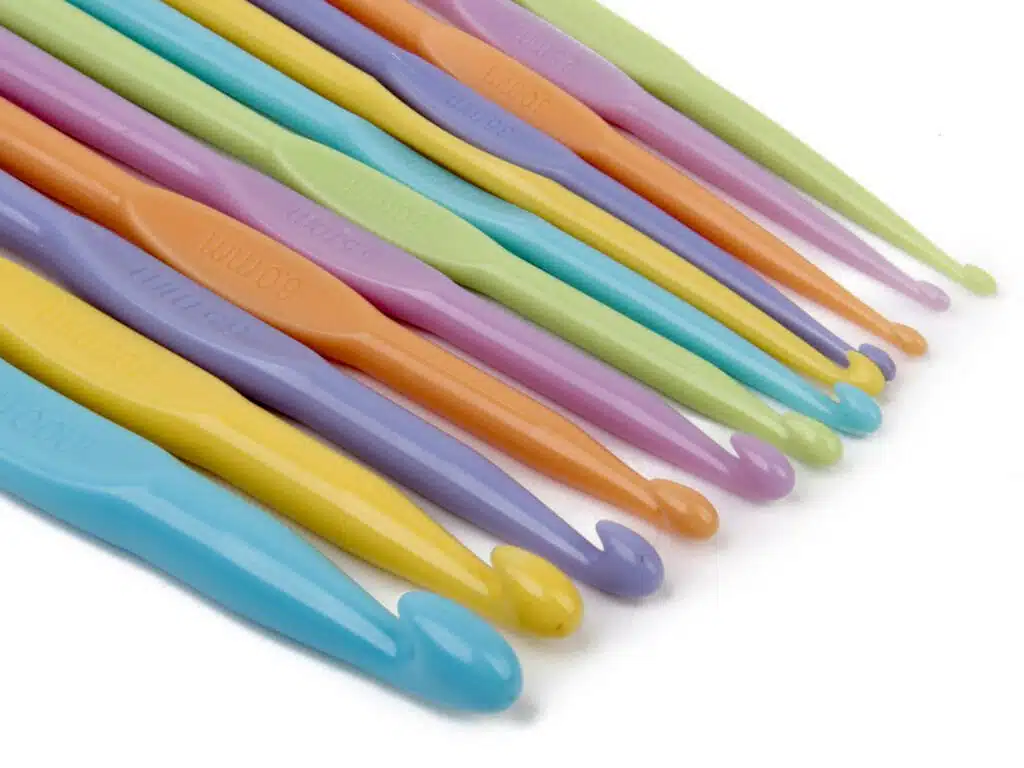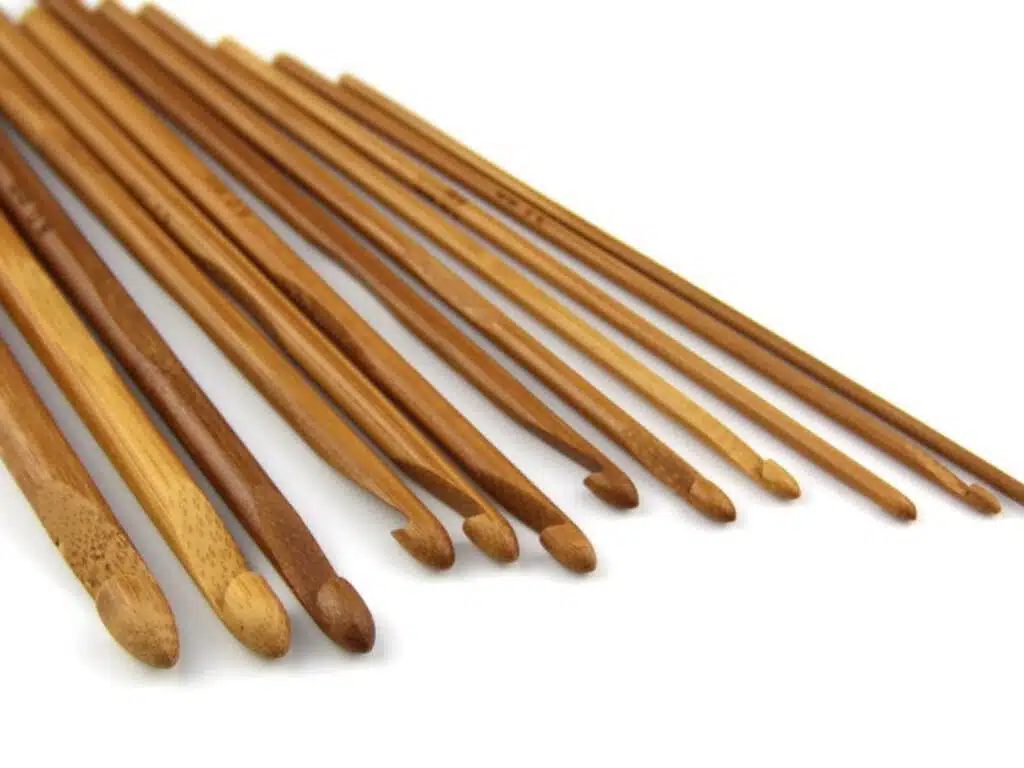The crochet hook, the crochet artist’s brush. This article aims to clarify how a crochet hook is constructed, what different models there are and what influence different materials and constructions can have on the actual crocheting.
Crochet hooks are primarily distinguished in their strength/size (measured in mm in Germany). The crochet hook strength to be used usually depends on the selected yarn for your project and how tight or loose the crochet should be.
However, it is up to you what kind of model you use in the respective strength. There are better and worse quality crochet hooks, but what it comes down to in the end is good personal handling of the hook.
The following is only about the different models/types of crochet hooks and their differences and the general structure of the crochet hook. The links below additionally explain how to hold a crochet hook and how to find the right crochet hook size for each yarn and project.
Construction of a Crochet Hook
The following section deals only with the most essential element of any crochet hook, the hook. Although elements such as handles, material, etc. can influence the actual crocheting in terms of comfort and crochet speed, they are not responsible for the actual crocheting.
Every crochet hook has a hook. No matter how big a crochet hook, no matter what material and color, each crochet hook has a hook with which you eventually crochet. This hook will be, depending on the brand, sharper or more rounded, larger or smaller.
The individual elements of a crochet hook are indicated as follows:
Although every crochet hook always has a hook, these differ in small differences from each other, which are not necessarily better or worse but have to be experienced in order to decide for yourself, with which crochet hook/brand you crochet the best or is most comfortable for you to crochet with.
Point: The tip of the crochet hook called the point, is usually the part of the crochet hook that passes through the stitches. Like all parts of the crochet hook, it should also have a smooth surface. The point is usually slightly rounded, too pointed a tip may split the yarn when pushing through a stitch, still, both variants exist.
Throat and Groove: The groove allows you to hold the thread you pick up with the hook. A too shallow groove may cause the hooked yarn to slip off and fall off the hook. In turn, too deep a notch can prevent quick and fluid crocheting as it holds the thread too firmly.
Shank / Shaft: On the shaft are usually resting the loops that you create while crocheting. If you are crocheting stitches that create a lot of loops on the shaft, too short a shaft can be disadvantageous because you are no longer able to recognize the loops on the shaft correctly. Too long a shaft, on the other hand, may tend to break off or bend faster due to the increased tension on the crochet hook.
As I said, all these are qualities that are not necessarily bad or good, but rather are based on your personal preferences. What represents the best brand for you can only be found out by crocheting different brands by yourself.
Different Crochet Hook Models
The hook is the centerpiece of every crochet hook, but the handle, length, material, and colors vary from brand to brand and must also be tested by hand-to-hand testing. Below is a list of different models of crochet hooks commonly found in your craft shop.
Crochet hooks with rubber handle: Let’s start with my personal favorites, the crochet hooks with rubber handles. These crochet hooks offer a rubberized and slightly soft grip that is not only more slip resistant than crochet hooks without a rubber grip (whether sweaty hands or not) but also has a generally thicker grip. The handles are shaped differently depending on the brand.
Crochet hooks with rubber handle (amazon ad link):
Especially “ergonomic” shaped crochet hooks should be tried out beforehand, whether you personally like the handle or not. In general, these crochet hooks feel very different when compared to “normal” crochet hooks and have often a very unique feel to them that is shaped to avoid cramps or discomfort while crocheting.
Ergonomically shaped crochet hooks (amazon ad link):
Aluminum crochet hooks: Aluminum crochet hooks are inexpensive and almost indestructible hooks that are available in most craft shops. Most of the time these needles have a flattened area which serves as a thumb grip to provide more hold when crocheting. Since the thickness of the handle depends on the size of the hook, small hook sizes also have a very thin handle, which could cause problems in handling.
Aluminium crochet hooks (amazon ad link):
If you get slightly sweaty hands when crocheting, these needles could be a little less comfortable because the handle, despite their flattened position, is made of smooth aluminum. However, this can be easily remedied by wrapping some duct tape around the handle. Multiple layers of duct tape can additionally thicken the handle if you so desire.
Plastic crochet hooks: Plastic hooks are most often, same as their aluminum counterpart, molded in one-piece. Although these hooks are theoretically an alternative to metal hooks (for example in allergies), plastic hooks are not recommended if you crochet very tight stitches that create a lot of tension while crocheting, as plastic is simply too rigid a material that can easily break under the tension.
Plastic crochet hooks (amazon ad link):
Of particular note is how the yarn behaves on plastic hooks. Instead of “gliding” over the shaft and hook, as is the case with metal needles, plastic needles typically resemble skidding, which can lead to unwanted loosening of the thread.
Again, if you get slightly sweaty hands while crocheting, simply wrap the plastic handle with duct tape.
Bamboo crochet hooks: More and more sustainability is being used today and what is more sustainable than bamboo? Bamboo hooks, similar to aluminum and plastic hooks, are made in one piece and also have a notch for the thumb for a better grip. Since bamboo is not a rigid material such as plastic and therefore more flexible and yielding, it can happen that crocheted stitches are not as firm as using metal hooks.
Bamboo crochet hooks (amazon ad link):
Whatever hook you decide to use, everything that counts is that you enjoy crocheting with it and are happy with the results.
